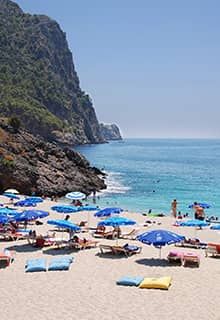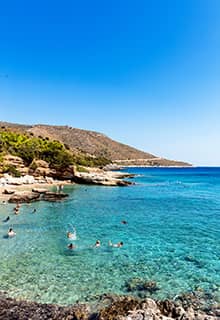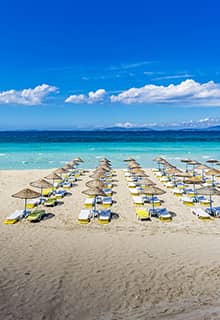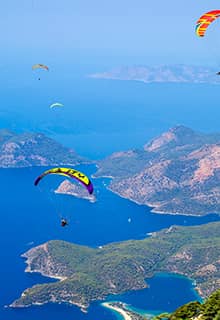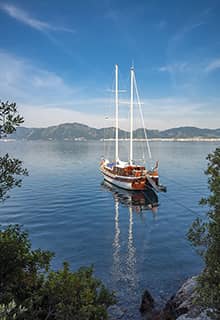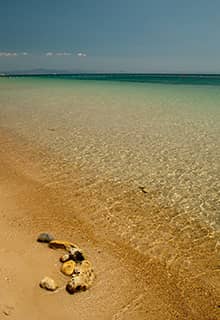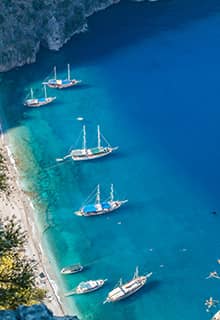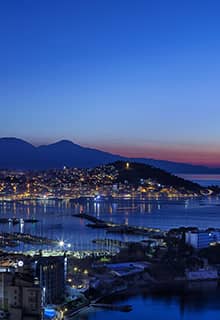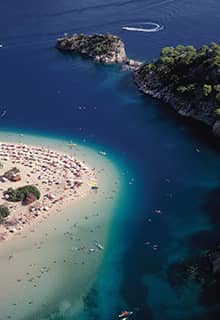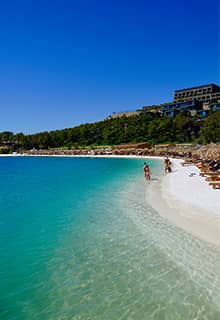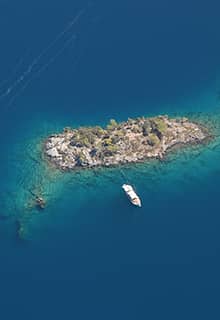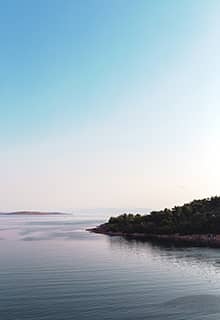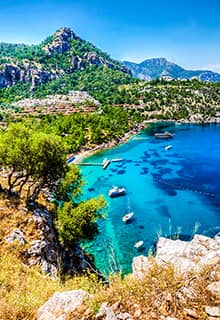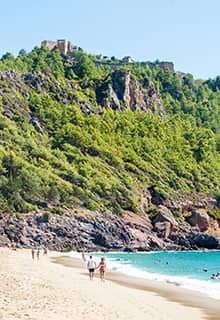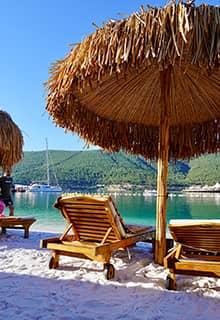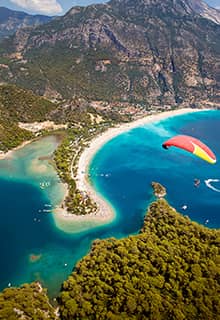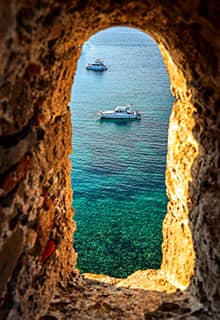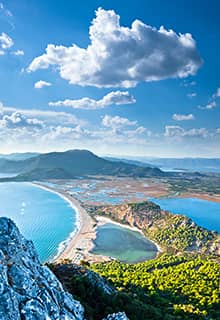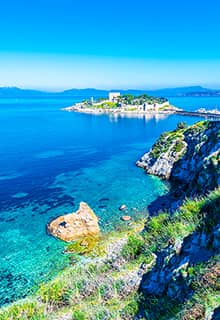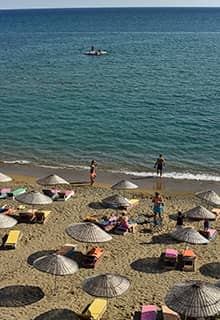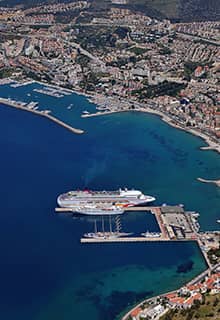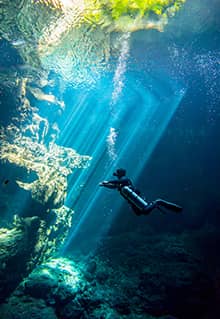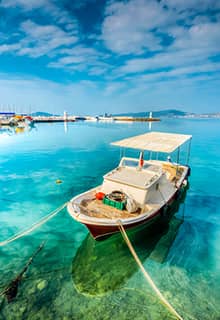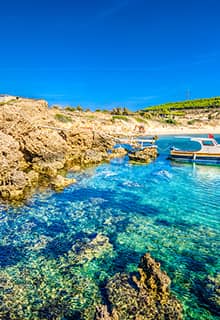

Aegean Sea
in Türkiye
The Aegean Sea with its beautiful islands, coves, and fascinating coastline, is an all-time-favorite for tourists from around the world.
The Black Sea waters, which come from the Dardanelles and its undercurrent and are rich in nutrient salts, oxygen, and plankton, positively affect marine life in the north. Although the Aegean Sea is rich in oxygen, it is poor in phosphate and nitrate. Therefore, the southern part is one of the poorest seas in the world in terms of fish. However, sponging in the southern region of the sea is another line of work that has been important throughout history. Sardines are the main fish of the Aegean Sea.
The name “Aegean” comes from mythology. The Turks once called the Aegean Sea the “Sea of Islands (Adalar Denizi in Turkish).” The Aegean Sea has a typical Mediterranean climate. İzmir, Kütahya, Muğla, Manisa, Aydın, Uşak, Afyonkarahisar and Denizli are the provinces in the Aegean region. Summers here are hot and dry, and the provinces are popular for summer holidays.
The Aegean Sea is one of the most beautiful regions in the world and full of hidden beauties. Bodrum, Fethiye, Marmaris, Dalyan, Göcek, and Ölüdeniz are among the many destinations that will enchant you.
One of the most beautiful places to go in the Aegean Sea is the island Bozcaada. There is plenty of accommodation on the island, and restaurants to enjoy the local cuisine. The sea on the island is wonderful, and the sunsets are truly unforgettable. Bozcaada can be reached from Çanakkale and Geyikli.
The ancient city of Ephesus, located in the Selçuk district of İzmir, is one of Türkiye’s most popular archaeological sites. Ephesus was famous in antiquity for the Temple of Artemis, one of the Seven Wonders of the Ancient World. Known as the" first great capital of Asia," the city was included on the UNESCO World Cultural Heritage List in 2005. The construction of the ancient city of Ephesus, a capital of ancient civilizations, dates back to 8000 BCE. After antiquity, Ephesus continued to be an important center as evidenced in the House of the Virgin Mary, which is considered a place of pilgrimage for Christians, and later Islamic structures.

